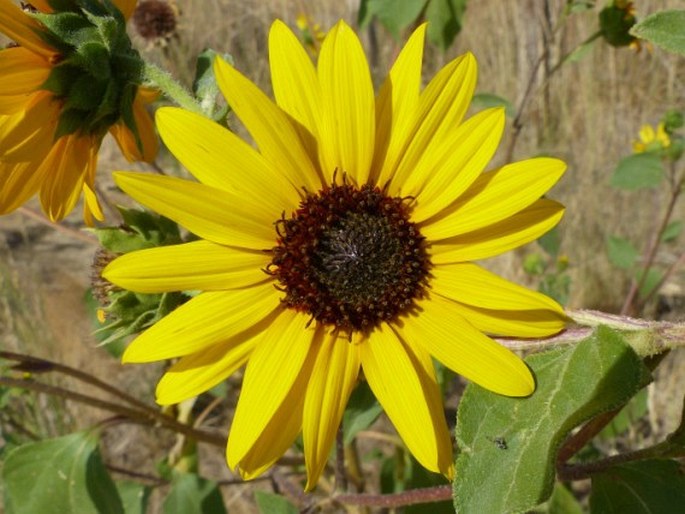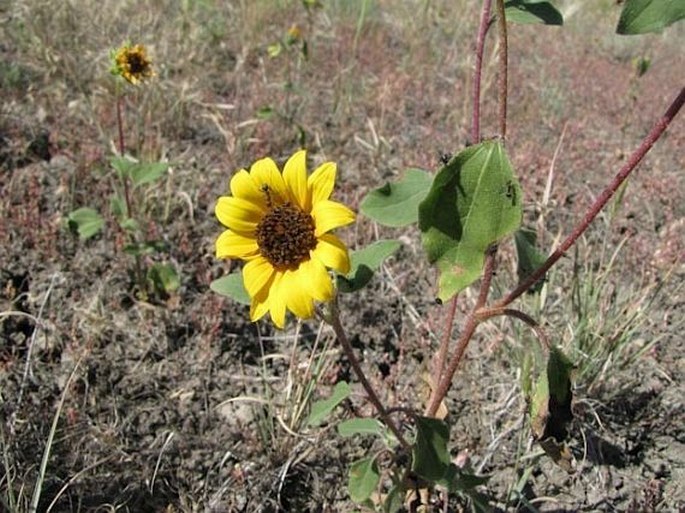Syn.: Helianthus macrocarpus DC., Helianthus lenticularis Douglas
Family: Asteraceae Bercht. et J. Presl

Distribution: Original North American plant found all throughout Canada, USA and parts of Mexico. Original distribution is believed to be in western and mid-western part of the continent. Nowadays spread widely and introduced to all parts of the globe in the cultivated crop form, naturalized in all America (as far south as central Argentina), Europe, Macaronesia, Central and South Asia, Australia and South Africa. It is invasive species in Central Asia, Israel, Turkey. Weedy plant, listed as noxious weed in 46 states of USA.
Ecology: The original nominate species can be found in dry open areas, dry slopes and along the roads. Elevations of 0–3000 m. Blooms from July to September.
Description: Annual herb, stems 20–120(–300) cm tall, erect, bristly haired, usually branched. Lowest leaves opposite, stem leaves are alternate, oval to slightly heart-shaped, 10–20 cm long, 5–20 cm wide, surface sandpapery texture, long-stalked, margins coarsely toothed. Single flower heads terminal, 7–15 cm across, disc florets numerous, 5–8 mm long, reddish purple to brown; ray florets yellow, 17–30, 25–50 mm long; bracts oval to lanceolate, surface with bristly hairs, borne in several overlapping rows. Fruits are achenes (sunflower-like), 4–5 mm, pappi of small deciduous scales.



These images were taken in Canada, Alberta, Red Rock Coulee (August 2012).


